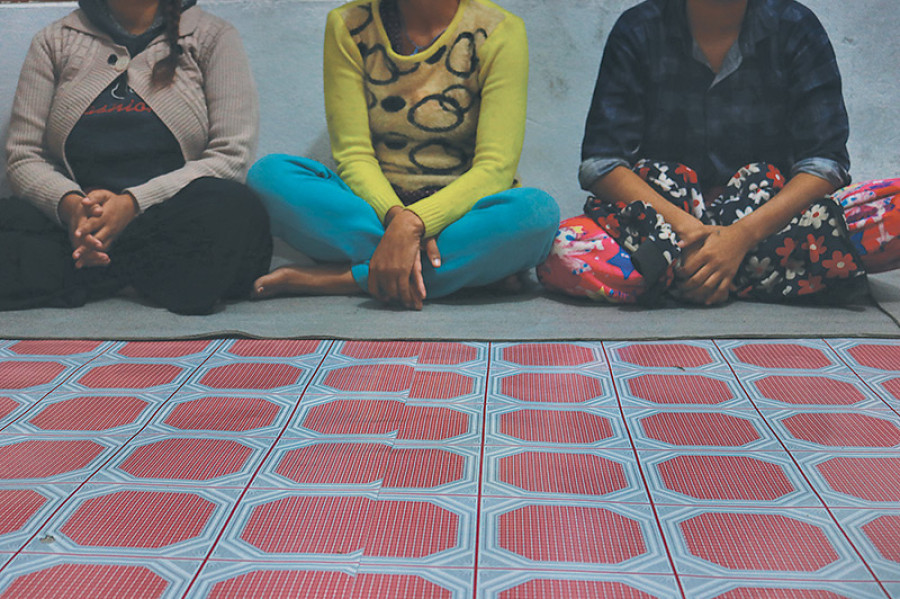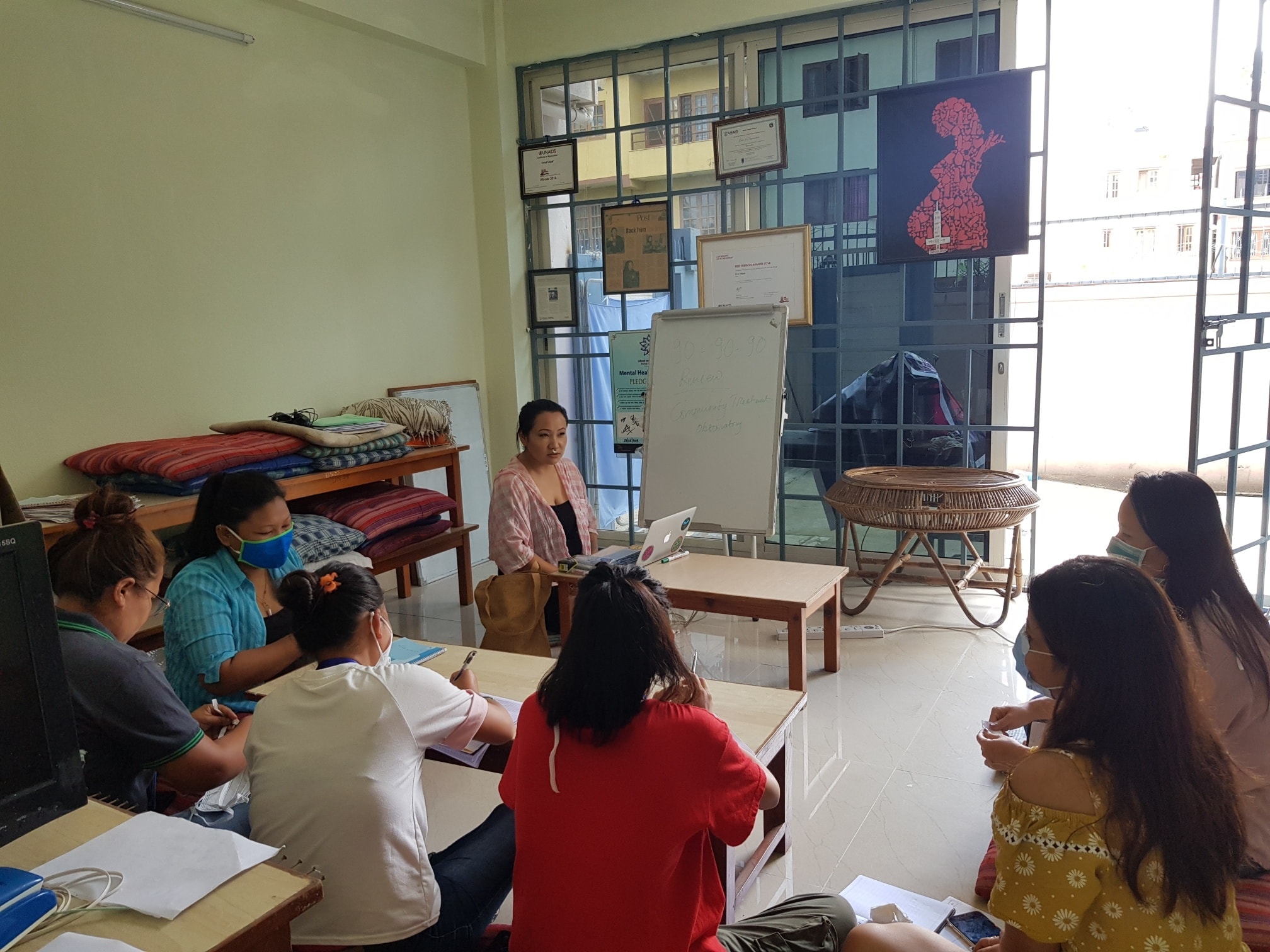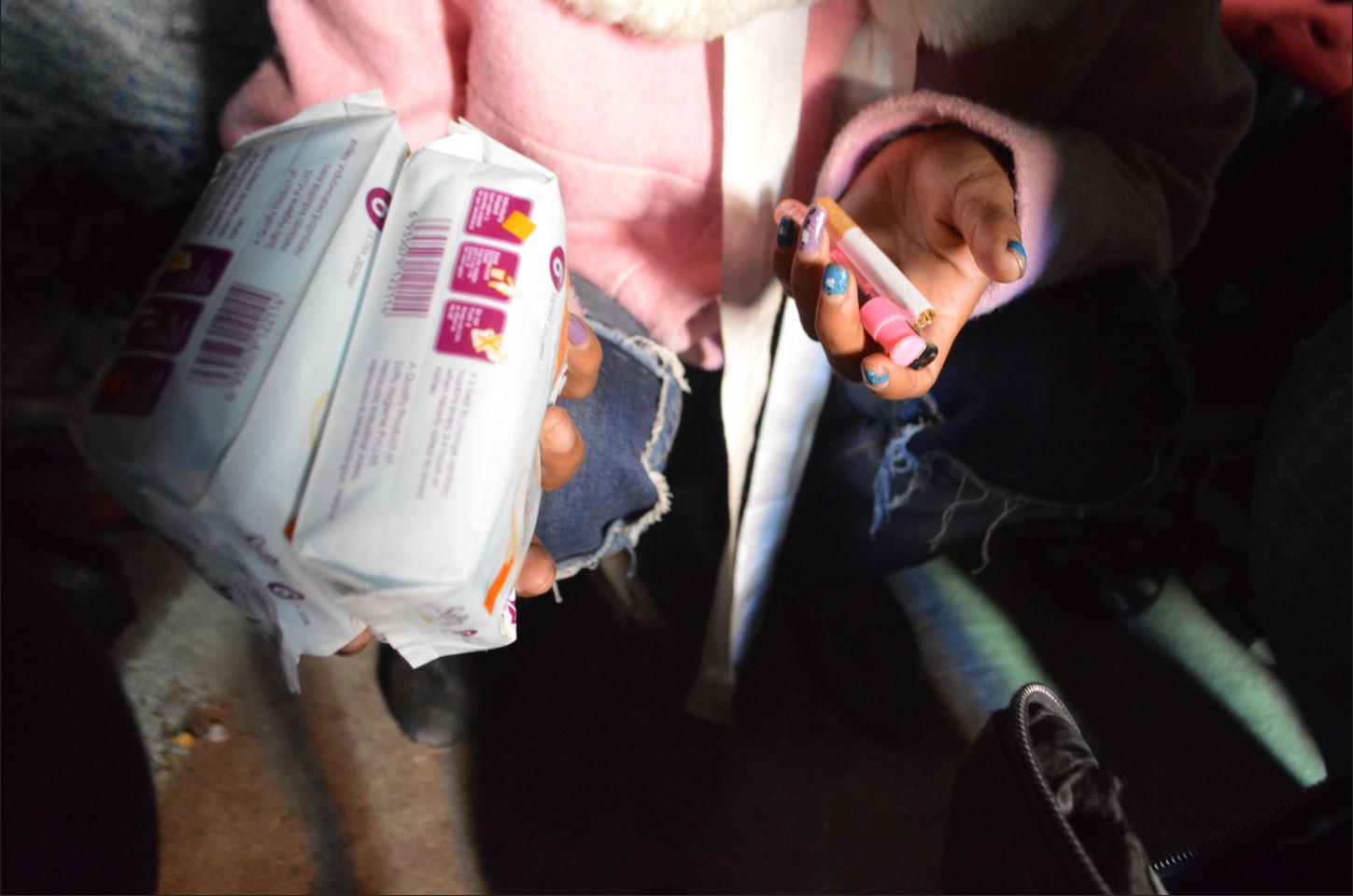Women drug users in eastern Nepal: A silent story
Women drug users in eastern Nepal: A silent story
A song rings out from a cellphone on the table, ringing twice before Vara* puts down her ladle, swings her baby to her other hip, and picks up.
A song rings out from a cellphone on the table, ringing twice before Vara* puts down her ladle, swings her baby to her other hip, and picks up.
“I told you not to call until I’m done with my work,” Vara scolds, but she’s already bending down, sweeping a hand under the kitchen unit and extracting a package. So fast that I don’t even have time to see its contents, she hands off her baby to a friend, and runs to bring the load to her runner boy, who will deliver it to a customer.
Vara is a 28-year-old single mother in Dharan, Sunsari. In the time I spend in her kitchen, she is a humming bird—moving from the potatoes on the stove to the phone on the steel countertop, all the while continuously nursing her small one-year-old. In between the cooking, cleaning for her household, and caring for her daughter, Vara also deals drugs. She takes them, too, though not as heavily as she used to.
.................
In Eastern Nepal’s Jhapa, Sunsari, and Morang districts, where drugs move freely through two open border points and substance abuse is an ever-increasing problem, there are 15 male rehabilitation and treatment centres. For their women counterparts, there are just two. The numbers, however, are not reflective of the need for either gender, but especially so for females, who are often limited from getting the help they need due to cultural stigmas and taboos.
“Drug use further weakens the disadvantaged position of women,” United Nations Office on Drugs and Crime’s (UNODC) writes in a report about Nepal, “especially in societies with a high degree of gender inequality.”
In Nepal, a society that still prioritises men, it’s hard enough to be a woman, let alone a woman who is addicted to drugs.
“Women are looked at like third citizens in terms of everything,” Parina Subba Limbu, the loudest voice for women drug users (identified by World Health Organization as PWUD—Persons Who Use Drugs to replace the word ‘addict’, which stigmatises drug users), and an ex-user herself, tells me. Parina is the founder of the first women’s by and for organisation, Dristi Nepal, which addresses a host of gender-sensitive issues, and advocates for treatment rights for women who use drugs in Nepal. Among those issues, women face a heightened risk of HIV/AIDS, sexually transmitted disease, and difficulty reintegrating into the society post-treatment.
The road to addiction
Though male and female drug patterns often begin the same way, their outcomes are wholly different.
“Just enjoyment,” Rachana* shrugs when I ask her why she began taking drugs. Rachana, 27, is a six-years-clean ex-PWUD and now a volunteer for Dristi, where she was treated. Though many others also began taking drugs for fun, other catalysts, women tell me are: family neglect, exposure from a boyfriend, or coping with problems like poverty or abuse. Two women I spoke with were the daughters of Gurkha soldiers, which, in their cases, meant little supervision and ample money to spend freely in their suffering time. The Deputy Superintendent of Police (DSP) of Dharan, Rameshwor Paudel, cites this trend as a problem that has fuelled drug usage throughout the city, regardless of the gender.
“At first it’s seen that the guardians stay in [the] UK and [the] USA and leave their children behind and [the children] get into addiction, and that becomes the habit and tradition that others follow,” he says.
But despite the reason they begin taking drugs, often, one catalyst will lead to another.
That’s how it went with Rachana, who started using “the same way everyone does” with smoking cigarettes and marijuana when she was 17 years old. Slowly, she progressed to pills, then brown sugar heroine, but switched to injecting morphine into her veins to cope with the pain of being gang raped by recovering addicts.
“There were five boys who did that to me,” she tells me. “The way they see suffering addicts is bad. They should treat a suffering [person] properly,” she says, speaking about how men carry negative perceptions about suffering women, despite histories of drug use together. Instead of guiding her to stop using drugs at the time, her five attackers took advantage of her. “They try to use us,” she adds.
Feeling like she couldn’t tell anyone for fear her family would kick her out, she hid inside her home and submitted further to substance abuse. “I took drugs as my company,” Rachana says.

Increased risks
According to UNODC’s initial study on women drug users conducted six years ago, drug use “...increases their vulnerability to intimate partner violence, to drug peddling and/or sex work required to sustain their drug habit and with that the risk of health consequences.”
Rachana’s own road to recovery did not protect her from an ex-partner who physically abused her, made her quit volunteering for other suffering women due to jealousy and a lack of trust and, ultimately, left her as a single mother.
At Dristi, one of the primary goals is to educate women on their increased risk of, and preventative measures for, HIV and AIDS, sexually transmitted infections and domestic abuse.
The group holds awareness programmes in schools, where volunteer peer educators teach about drug and sexual health. This is especially important, because much of the information is not made available in a typical school curriculum, or is not talked about openly.
“I only learned about HIV/AIDS in nursing school,” a 22-year old patient of Siyaan Female Rehab Center in Morang told me.
In a 2017 Ministry of Health Survey for Women Injecting Drug Users (WIDSU) in the Pokhara Valley, findings showed that “Comprehensive knowledge of HIV and AIDS among WIDUs was low (33.5 percent).” Additionally, the study found that 16 percent of WIDSU had shared needles with friends, making them a high risk for the virus infection.
To further address these problems, Dristi runs a branch office in Dharan, in a small shop Parina pays rent for out of pocket. There, two volunteers maintain an information centre, and refer women to the head residency centre in Kathmandu. They also maintain relationships with current women drug users who aren’t ready or willing to get treatment. “We give them cigarettes, supari, clean syringes,” Punam Rai says. She’s an ex- PWUD and a volunteer for Dristi at 23 years old, though her young age is hidden by her poised speech.
“We know every female addict in this town,” Punam says as she makes phone calls to still-suffering girls to come speak with me. I’m shocked by the willingness of these girls to come to the office, how they can be so open about their addiction among clean women.
A lanky 20-year old girl walks the distance from her home to Dristi and, upon arrival, immediately announces she’s dizzy. A mixture from the pills she’s just taken, combined with the heat of the day, has made her feel sick. Punam tells her to sit and offers her a Coke to drink. There is no judgment as the girl speaks openly about her drug use, her husband in rehab, her personal trip with friends to India to come back with pills stashed inside her mobile phone.
When her phone rings, she answers it, pausing to give the caller a number for where to get Nitrogen tablets, and nobody scolds her. Having been through it themselves, the recovered women in the office know the best they can do is educate and remain in touch with this girl. She’ll seek treatment when she’s ready.

Lasting judgment
“Not only [is it hard for] the users or ex-users, it’s very hard for workers, also,” Punam says. The week before, she tells me, she and another volunteer were nearly arrested on the job.
“We were carrying syringes needles and condoms in the marketplace and searching [for] new clients,” she starts, which is common practice for them to distribute to reduce health risks and unwanted pregnancy. When two cops came and forced them to dump their bags, their materials fell everywhere. ‘You guys are drug dealers’ the cops accused them, using “abusive language” and not believing that they worked at an NGO until one of them showed her card.
Though they are no longer using, those that have stopped still face harsh judgments in society for a past they once led.
According to UNODC, women drug users “face more discrimination and stigma from society,” as compared to men. This is the very reason that Vara, the single mother who deals and takes drugs couldn’t stop using, despite a two-year stretch at Dristi. She takes eight tablets a day that make it easier to deal with the stress of caring for her home and daughter.
“If I start being clean,” she says, “people will talk about my suffering,” which would drive her insane. Frequently, ex-PWUD go abroad to start fresh for this reason, without anybody to dangle memories of their past lives in front of them.
Looking forward
“We need to look at the issues of women drug users beyond staying sober, because that’s not the bottom line,” Parina believes. As many of these women are single mothers or divorced from abusive partners, they need to learn how to support themselves, something society doesn’t otherwise teach young girls, she says.
This debilitating fact feeds into Vara’s need to deal drugs. Tasked with feeding and clothing her baby, without the help of a long-gone partner, creates a need for her to earn money, no matter the way.
“Carrying a child, who will give me a job?” Vara asks, but the answer is already clear. For her, where dealings can be done from the kitchen where she cooks and feeds simultaneously, selling drugs is as good a business as any to compensate with the 20 rupees her mother gives her a week.
“To live, I have to do something,” Vara says, “There is no space in this world for simple people.”
At Dristi, workshops are held that teach the women skill sets for them to go on and earn money for themselves. “If we become economically strong, then we can decide things for us,” Parina says.
Many of the girls I speak with say that a solution for better treatment for female PWUD must come from more awareness programmes, maybe even mandated at a government level, but Parina tells me something different.
“To have a solution,” she says, “the first thing would be us. How women perceive ourselves.” In order for the patriarchy to end, for the cycle of drug abuse to end, for abuse from partners to end, women need to—in Parina’s words—“acknowledge their existence.” (Which is, not incidentally, a slogan of Dristi Nepal: Rights to Existence.)
Though many female ex-PWUD problems are exacerbated by Nepali society, Parina believes that change must first originate in the perception of the woman.
“We cannot always blame the society if we cannot do anything to change,” she adds.
*some names have been changed for the anonymity of the women
Kunze is an American freelance journalist currently living in Jhapa, Nepal
https://kathmandupost.com/miscellaneous/2018/01/13/women-drug-users-in-eastern-nepal-a-silent-story





